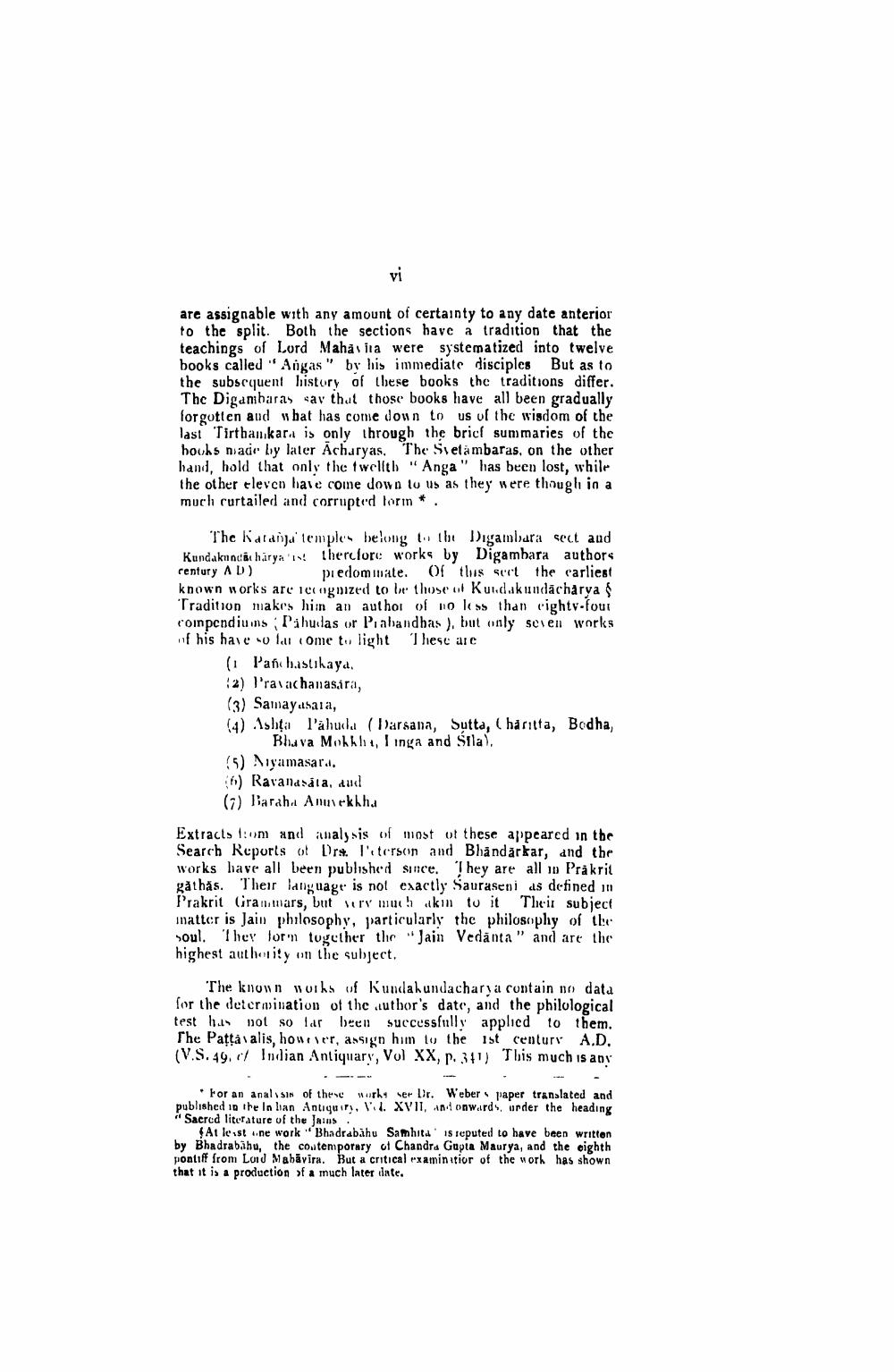________________
vi
are assignable with any amount of certainty to any date anterior to the split. Both the sections have a tradition that the teachings of Lord Mahavita were systematized into twelve books called "Angas" by his immediate disciples But as to the subsequent history of these books the traditions differ. The Diganbaras say that those books have all been gradually forgotten and what has come down to us of the wisdom of the last Tirthankara is only through the brief summaries of the books made by later Acharyas. The Svetambaras, on the other hand, hold that only the twelfth " Anga" has been lost, while the other eleven have come down to us as they were though in a much curtailed and corrupted form *
.
The Katanja temples belong to the Digambara sect and Kundakundacharya is therefore works by Digambara authors century AD) predommate. Of thus sect the earliest. known works are recognized to be those of Kundakundacharya § Tradition makes him an author of no less than eighty-four compendiums Pahudas or Prabandhas), but only seven works of his have so far come to light These are
(1 Panchastikaya.
(2) Pravachanasára,
(3) Samayasara,
(4) Ashta Pahuda (Darsana, Sutta, Charitta, Bodha, Bhava Mokkhi, I inga and Sila).
(5) Niyamasara.
(6) Ravanasata, aud
(7) Baraha Anuvekkha
Extracts 1:om and analysis of most of these appeared in the Search Reports of Drs. Peterson and Bhandarkar, and the works have all been published since. They are all in Prakrit gathas. Their language is not exactly Sauraseni as defined in Prakrit Grammars, but very much akin to it Their subject matter is Jain philosophy, particularly the philosophy of the soul. They form together the Jain Vedanta" and are the highest authority on the subject.
The known works of Kundakundacharya contain no data for the determination of the author's date, and the philological test has not so far been successfully applied to them. The Pattavalis, however, assign him to the 1st century A.D. (V.S. 49. f Indian Antiquary, Vol XX, p. 341) This much is any
For an analysis of these works ser Dr. Weber paper translated and published in the In han Antiquiry, V. XVII, and onwards, under the heading Sacred literature of the Jains
At least one work Bhadrabahu Samhita is reputed to have been written. by Bhadrabahu, the contemporary of Chandra Gupta Maurya, and the eighth pontiff from Lord Mahavira. But a critical examinatior of the work has shown that it is a production of a much later date.




